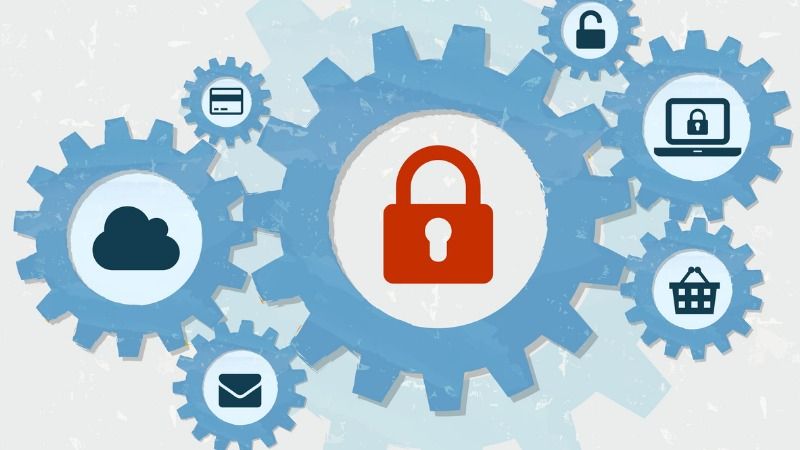What is Digital Rights Management?
Digital Right Management is a method of protecting digital content. It is used to enable content and data security. Digital Rights Management refers to a set of hardware and software solutions that allow us to have control over how we use, change, and share content or information assets through online or offline means. In a sense, Digital Rights Management enables publishers to limit what customers can do with their products. To avoid legal concerns emerging from inappropriate use, DRM is now a great necessity in data security.
Online piracy has been the nightmare of copyrighted material since the rise of person-to-person file exchange services such as torrent sites. DRM methods are not police officers capable of catching pirates. Instead, they make stealing or sharing digital content nearly impossible.
How does “Digital Rights Management” work?
Digital Rights Management cooperates with codes that are designed to
- prohibit copying
- limit the duration of access
- limit the number of devices on which a certain product can be accessed
- limit access to specific IP addresses, locations, or devices. This implies that if your media is exclusively available to German citizens, it will be inaccessible to those in other nations.
DR managers use encryption apps to encrypt their sensitive data and protect their digital content.
DR managers preserve their digital content by restricting or banning
- editing
- saving
- sharing
- forwarding
- printing
- taking screenshot
- screen recording your digital content.
- Account sharing (so that several users cannot access your material through a single account)
- Sharing activation codes (so that keys are not sold to numerous people for access permission)
DRM is also useful once DR managers set an expiry date for their document or media, after which the data will no longer be accessible to the user. This might also be accomplished by restricting a user’s frequency of usage. For example, a song may be suspended when the user has listened to it 10 times or when a document is accessed and printed 20 times.
DRM is also used as a device controller – This technology stops users from opening a file if they are on an unauthorized device. Enterprise DRM largely relies on device-based control. For instance, device manufacturers must have Netflix’s DRM certification.
Digital Rights Management Solutions and Content Security Benefits
It raises awareness.
DRM solutions are also a way of educating and informing customers and users about content security policy, which means prohibiting doing any harmful thing to the owner’s digital content. Hence, customers are becoming more aware of “copyright and intellectual property.” Intellectual property is an abstract property that comes as a result of creativity, such as patents, copyrights, etc.
You can retain ownership.
Without DRM, it would be challenging to follow the original source or author in this global content distribution. DRM enables copyright holders to keep ownership of their works while preventing modification of the original product. The original work is preserved.
Better Technology
DRM, which often seeks to maintain data security by limiting access to digital content, frequently contradicts consumers’ desires for free and simple access. This contradiction leads digital content creation officials to search for new DRM-free content. This motivates distributors and those who are responsible for digital content creation to advance DRM and license agreements. DRM encourages digital content creation officials to look for other technologies that are better at licensing than DRM.
Income Protection
Video and film producers invest money to produce their works in the hopes that they will be able to repay their costs once it is released. Only paying users will be able to watch the video or movie thanks to DRM. Additionally, it guarantees that only a specific audience can view the video. For instance, only adults who can verify their age should be able to access movies with adult-oriented content. (e.g. Netflix)
Data Security
DRM is crucial in terms of preventing file exchange, and any unauthorized access to sensitive data such as contracts, financial documents, employee data, and strategic planning… DRM allows businesses to encrypt files and track who has accessed them. It safeguards trade secrets, allowing you to maintain market leadership and commercial success. Consider a pharmaceutical firm. It may have a patent in the works for a groundbreaking new medicine, but the lack of DRM techniques might result in a competitor obtaining the IP and coming to market quicker. Alternatively, a bank undertaking an internal investigation may have critical papers made public, thereby harming its market image. DRM-enabled digital content management mitigates such dangers.
It boosts compliance with laws.
Digital rights holders can avoid legal problems caused by unauthorized sharing and resale of their works. Instead of paying court expenses, they can get rid of spending a lot of money and time on legal problems. For example, regulations may say that users may only open a file in a specified area. This is mostly attributed to governments and government agencies. DRM mechanisms detect how and where a user opens a file.
Use-Cases
We can derive DRM implementation examples:
- Multimedia: audio, video, image (Netflix, Youtube)
- Games and applications
- Confidential documents: bank statements, companies’ financial records
- IP assets: product plans, patents
- Governmental documents: policy documents
- Smart hardware: automobiles, kitchen electronic gadgets
- Licensed Ebooks: online library, Ebook stores, digital subscriptions
Mobile Device Management and Digital Rights Management
Mobile Device Management is the administration of mobile devices, such as smartphones, tablet computers, and laptops. As understood from its name, it is a control mechanism over mobile devices. Digital Rights Management serves the same purpose just as MDM. DRM, as well, is a control mechanism over digital media & digital content. The only difference is DRM can be applied to any technological product or work (software, hardware, application…) whereas MDM is processed on the technological device itself (mobile phone, tablet).
Mobile Device Management has a lot of similarities with Digital Rights Management.
Firstly, they are both resistant to data breaches & data leakages. They aim to provide data security and they are designed to fight back cyber threats. To achieve this, both use policies, digital rights management benefits from content security policy, and MDM benefits from company-specific data protection and privacy policy. In addition, these policies can be updated in both systems.
Secondly, individual permission and prohibition of data access can be appointed to the chosen user, or different groups of users (e.g. family subscription pack) can be matched with different areas of access. For instance, members who are below 18 years old are not matched with content that includes violence, murder, and pornography…
Thirdly, administrators can see the dashboards of each user or employee. Those dashboards give statistics and short summaries about data usage, data access… Therefore, any suspicious attempt can easily be recognized and the user who is responsible for possible harm to the digital content can easily be found.
Finally, file exchange and data transmission between users are secured via SSL/ TLS. They both provide file transmission infrastructure to guarantee data security. Data is secured with encrypted containers of backup. MDM and DRM encrypt sensitive data and collect important files under encrypted containers.
Briefly, we can gather common features both MDM and DRM have under this list:
- Content security policy creation and policy updates
- Different users & teams & groups with different access rights
- Role-based access control
- Encrypted storage of files in secure containers
- Secure data transmission via SSL/TLS
- Reports, statistics, graphs, or dashboards about data usage and data access
- Compliance with data protection and privacy policies
Conclusion
To sum up, publishers can use Digital Rights Management to restrict what their consumers can do with their products. DRM is now an absolute requirement in data security to avoid legal issues arising from improper use. Customers are becoming more conscious of “copyright and intellectual property” as a result of DRM. DRM allows copyright holders to conduct ownership of their works while preventing alterations to the original product. It encourages employees responsible for digital content creation to explore alternative licensing technologies to DRM. It protects company revenue by preventing unauthorized access and data transmission. With file encryption, it protects business secrets, allowing you to maintain market leadership and economic success. When all these functions are considered, at the end of the day, you will be very far away from any illegal thing in business.
Read Dive is a leading technology blog focusing on different domains like Blockchain, AI, Chatbot, Fintech, Health Tech, Software Development and Testing. For guest blogging, please feel free to contact at readdive@gmail.com.





